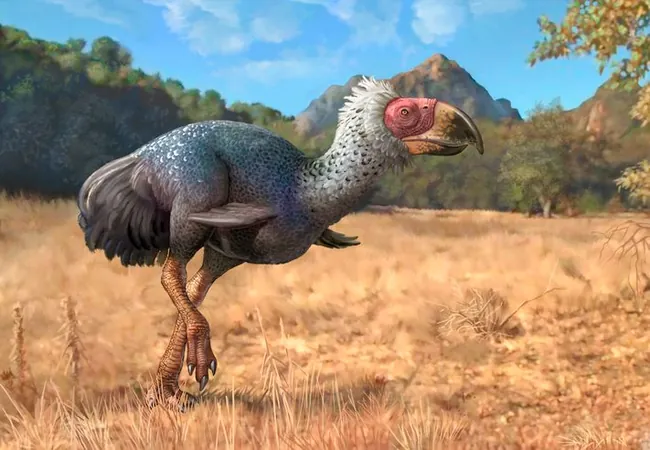
Meet the Terrifying Terror Birds: Prehistoric Apex Predators That Haunted Early Humans
2025-04-06
Author: Wei Ling
Introduction
One glance at a skeleton of a terror bird—towering up to 3 meters tall and armed with a beak that resembles a walking bolt cutter—reveals how these monstrous creatures earned their fearsome name. These giant, flightless birds ruled South America for an astonishing 45 million years, until their extinction roughly 100,000 years ago. Although they were not the largest birds to ever exist—having competition from the elephant birds of Madagascar and the moas of New Zealand—the terror birds were formidable in their own right.
Evolutionary Relations
Interestingly, terror birds are more closely related to modern-day seriemas—a pair of predatory, crane-like birds—than to other large flightless birds. What exactly made these prehistoric giants so deadly?
The Kelenken guillermoi
One standout species, the Kelenken guillermoi, boasted an incredible 72-centimeter long skull, the largest of any known bird. The beak of the Kelenken was not only long but also featured a vicious hook at its tip, suggesting it was designed for lethal efficiency. Current hypotheses posit that these terror birds utilized their daunting beaks to kill prey and rip through flesh, employing methods akin to those of today’s raptors. The narrow construction of their beaks, however, raises questions about their durability; anatomists suggest they might have delivered powerful bites but were likely fragile under lateral pressure.
Hunting Techniques
Fascinatingly, scientists speculate that terror birds could have used their beaks for rapid stabbing motions to immobilize their prey or even for pursuing smaller animals that could be swallowed whole. One species, Mesembriornis milneedwardsi, is estimated to have reached speeds of up to 97 kilometers per hour, rivaling the speed of a cheetah, making them terrifying hunters on land.
Interaction with Early Humans
A critical question in the study of terror birds is their interaction with early humans. There has been debate among biologists about whether these two groups ever coexisted. Some have theorized that early humans hunted these colossal beings to extinction. However, ongoing fossil discoveries indicate that the majority of terror birds had vanished long before humans set foot in the Americas. A more plausible explanation for their extinction involves competition with large carnivorous mammals from North America, such as dogs, cats, and bears, which traversed the newly formed land bridge that emerged around 2.5 million years ago.
Conclusion
As we continue to uncover the mysteries of these prehistoric giants, it's essential to appreciate their role in the ancient ecosystems they inhabited. Their incredible adaptations and impressive stature paint a vivid picture of a time when apex predators truly ruled the earth—leaving early humans to wonder just how they might have survived in a world dominated by such terrifying fauna.




 Brasil (PT)
Brasil (PT)
 Canada (EN)
Canada (EN)
 Chile (ES)
Chile (ES)
 Česko (CS)
Česko (CS)
 대한민국 (KO)
대한민국 (KO)
 España (ES)
España (ES)
 France (FR)
France (FR)
 Hong Kong (EN)
Hong Kong (EN)
 Italia (IT)
Italia (IT)
 日本 (JA)
日本 (JA)
 Magyarország (HU)
Magyarország (HU)
 Norge (NO)
Norge (NO)
 Polska (PL)
Polska (PL)
 Schweiz (DE)
Schweiz (DE)
 Singapore (EN)
Singapore (EN)
 Sverige (SV)
Sverige (SV)
 Suomi (FI)
Suomi (FI)
 Türkiye (TR)
Türkiye (TR)
 الإمارات العربية المتحدة (AR)
الإمارات العربية المتحدة (AR)